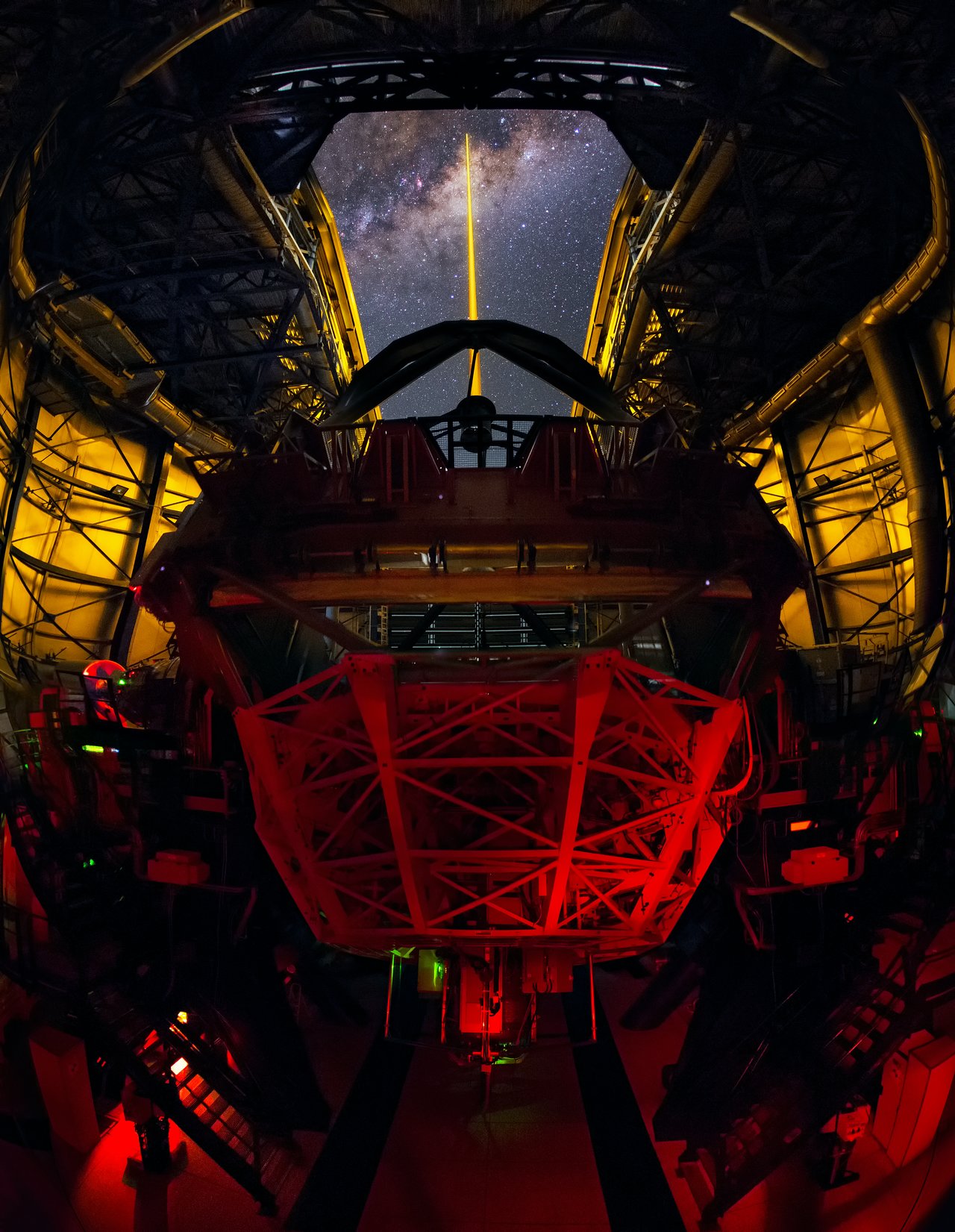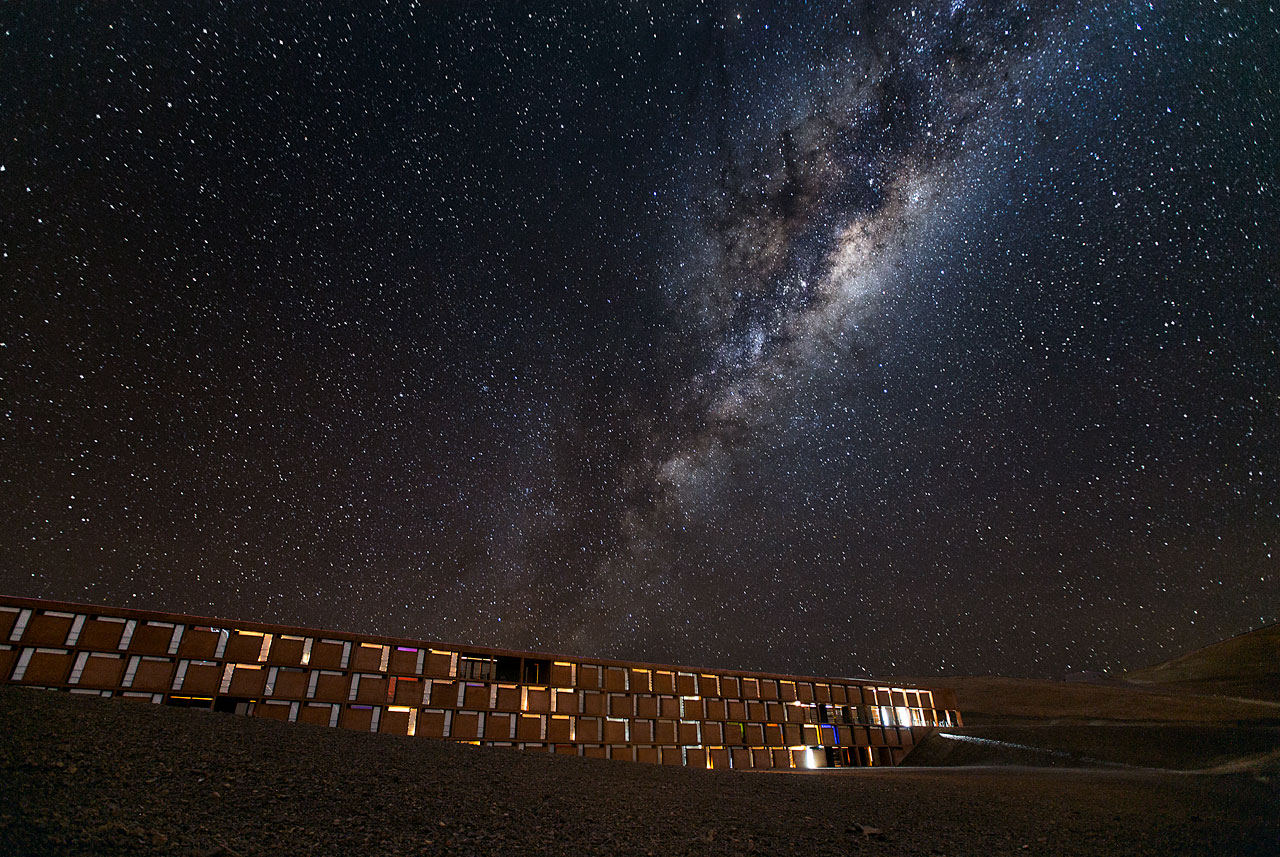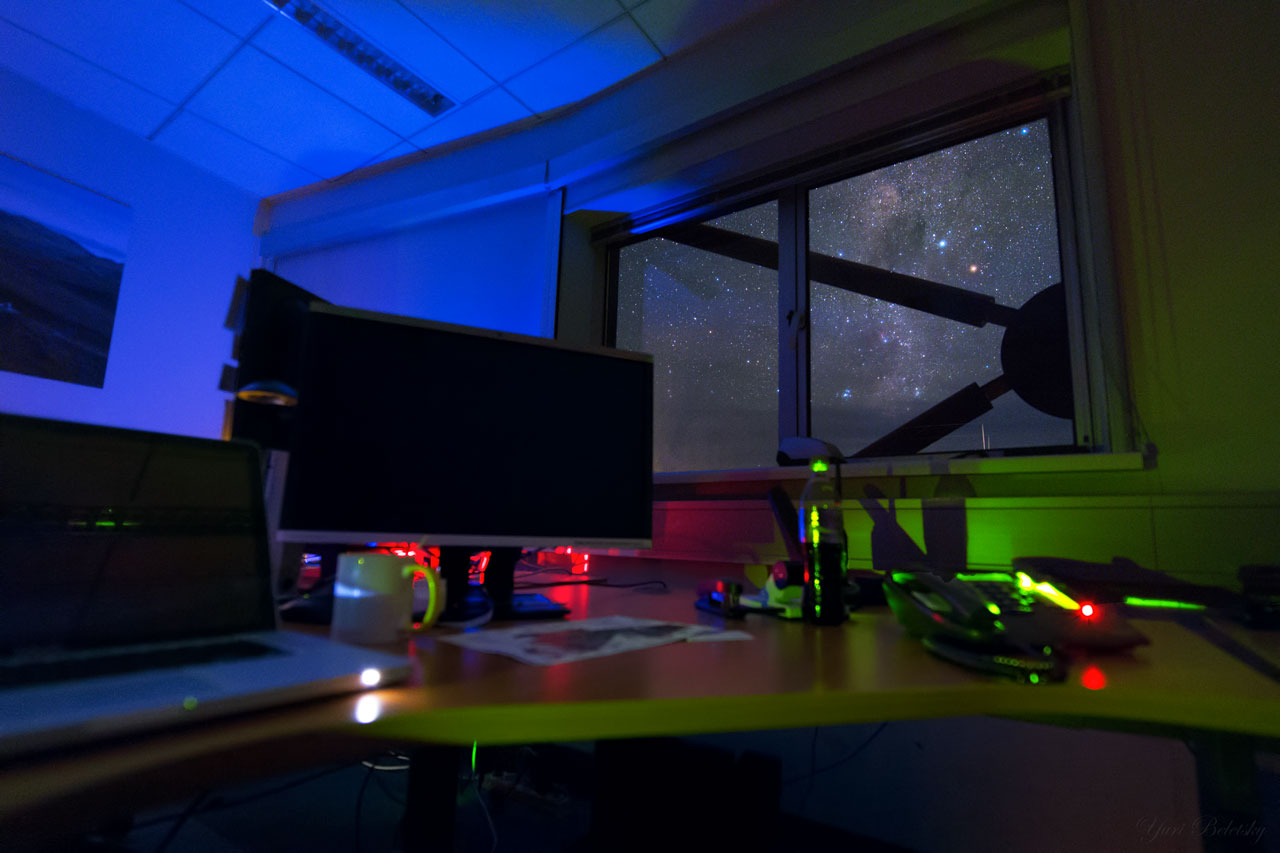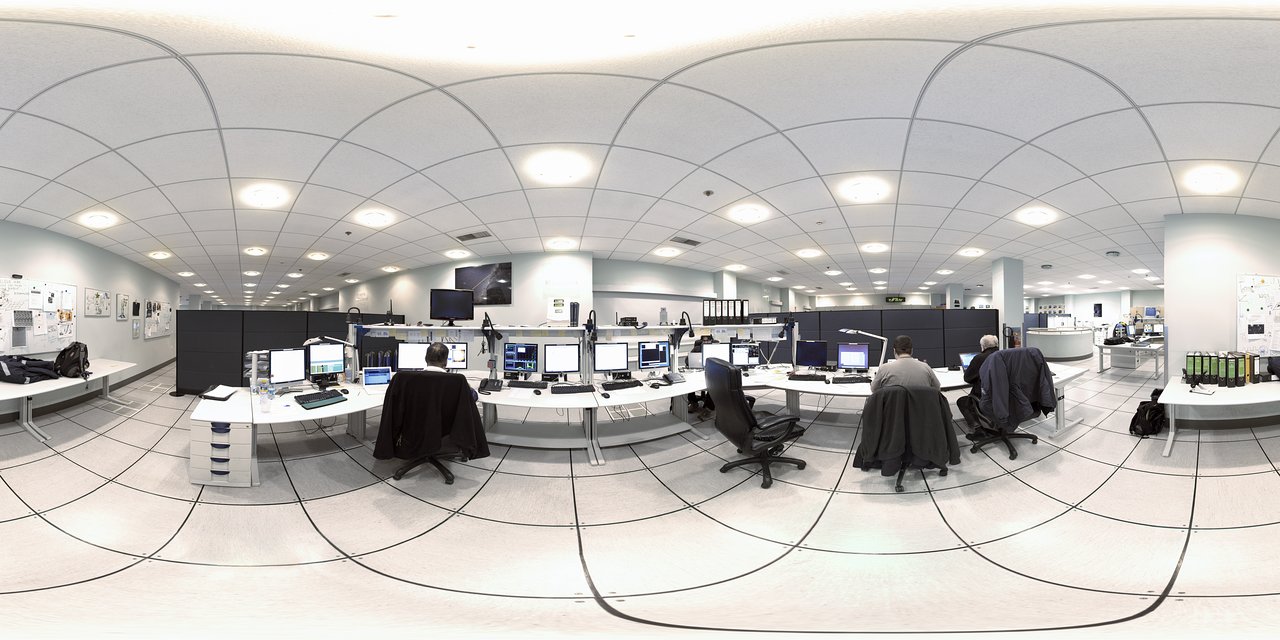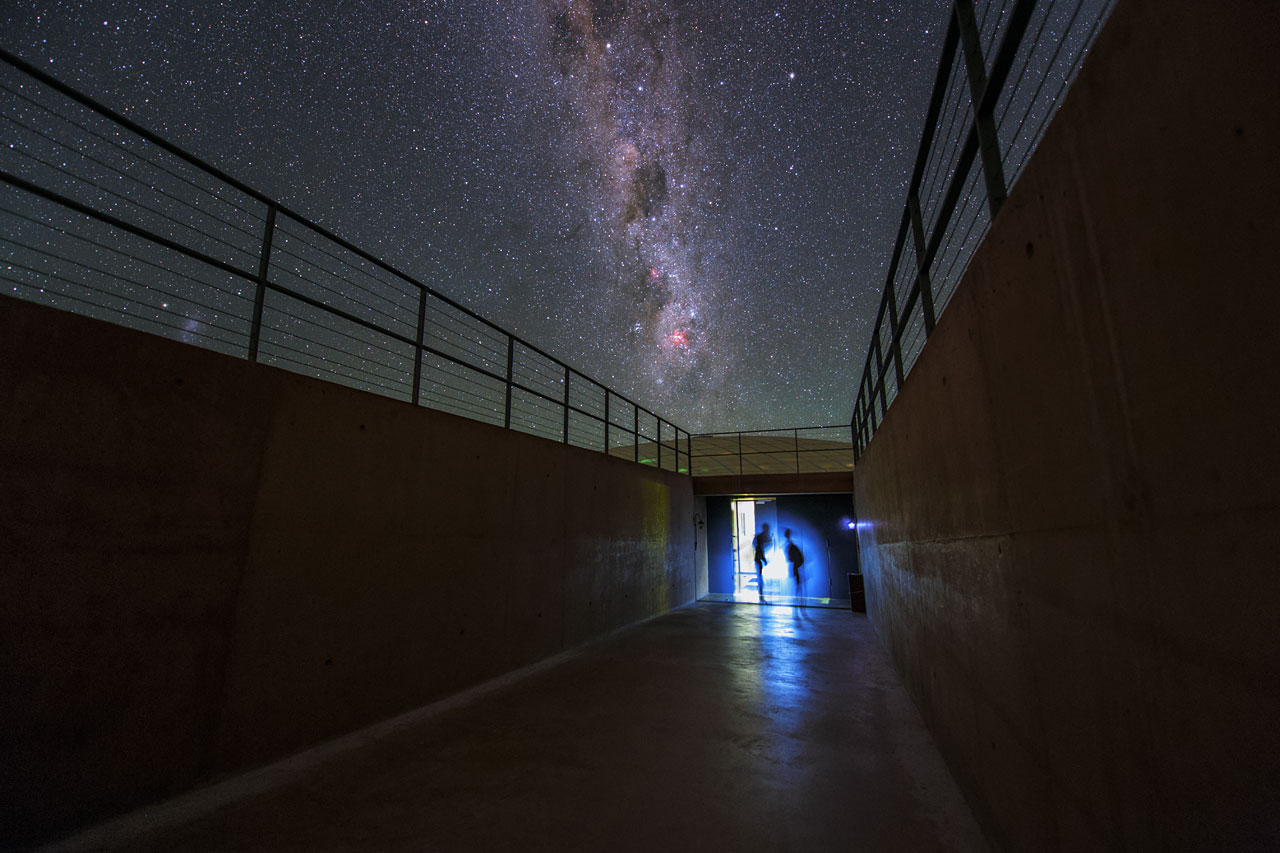- How it takes many kinds of people to operate a telescope control room
- The nightly routine of an astronomer
- What it’s like working in the Atacama Desert
Q: So Anita, tell us about your research and what you do at ESO.
A: I’m an ESO Fellow who studies distant galaxies, trying to understand how they form and evolve through cosmic time. I’m interested in questions like: how are stars born inside galaxies? Why do some galaxies keep forming stars while others stop? Why are galaxies shaped like they are, and how does it change over time?
I’m enjoying my time at ESO very much because it allows me to undertake my own research, but also discover so many other sides of astronomy that I did not even imagine: how observations are performed, how an observatory is run, how instruments are conceived of and built, how proposals of observations are evaluated and chosen, and so much more. It also allows me to meet and work with people from very different backgrounds, not just astronomers but also people such as instrument scientists and engineers, which is very enriching and mind-opening.
Another cool thing is that as part of my fellowship, I have to spend 40 nights at the Paranal Observatory in Chile each year. I’m based at ESO Headquarters in Germany, so it takes a long time to reach Paranal — it’s almost a two-day trip! So I decided to have 14-night shifts, meaning I go to Chile three times a year.
Q: On Paranal, what telescope are you currently working on, and what is your role?
A: I work on the Unit Telescope 4 of the Very Large Telescope (VLT), spending my nights operating its three instruments: MUSE, SINFONI, and HAWK-I. I really like the UT4 because it’s a bit special: it has lasers! These lasers help improve the image quality by correcting for the effect of the atmosphere, and it’s really amazing to look at these beams of light departing from inside the dome and get lost in the darkness of the night sky: they always remind me of a finger made of light, pointing in the direction of the target of the observations, unveiling where the telescope is staring.
My role is as the night astronomer. There are many different people who stay at the telescope through the night to take data, but there is always a telescope operator and a night astronomer. The telescope operator takes care of all aspects related to the telescope such as opening and closing the dome, moving the telescope to reach the pointing position, propagating the lasers in the case of UT4, and using a star to guide us during the observations. (During the observations we always “follow” the movement of a bright star to correct for the rotation of the Earth, or else our images could appear blurred.)
The night astronomer, on the other hand, has a list previously-approved observations from astronomers around the world who specify the coordinates of the targets, for how long they have to be observed, and the conditions they need for the observations (for example, if the night has to be dark or if the Moon can be visible, or how much atmospheric turbulence they can accept). So depending on visibility, weather conditions, the time and the priorities, the night astronomer decides where to point the telescope and what to observe. They also govern the instrument to take the data and verify and report the quality of observations.
Sometimes there will also be a visiting astronomer who comes to see their observations being made, but observations are mostly carried out in “service mode” by the night astronomer. The data are then immediately transferred to an online archive where the astronomers who requested the observations can access them.
Q: What is your daily (or rather, nightly) timetable like?
A: One of the things I really like about observing is that everything depends on nature — not only when and what to observe, but also the daily schedule of people working at the observatory. Night astronomers work every day, from sunset to sunrise. Two and a half hours before sunset we have a meeting where the daytime crew summarises what work has been done to maintain or repair the telescopes, the status of the various instruments, and what needs to be finished in the remaining hours before sunset. At that meeting, night astronomers specify what instrument they need at the beginning of the night and when they need to start observing.
So usually I get up in the afternoon a few hours before sunset, grab a quick breakfast, and go to the afternoon meeting. It takes place in the control building, on top of the mountain just below where the telescopes are, but we sleep in the Residencia, a wonderful building, located a couple of kilometres from the telescopes. During the Chilean winter (from June to August) nights are very long, so I travel to the control building by car in about five minutes. But during the Chilean summer (from November to January) nights are short, so I usually get up early enough to have the time to hike to the meeting on the so-called “star track”, a steep path that takes you up to the control building in about 45 minutes. I love walking there, listening to the silence of the desert, watching how the shades and colours change during the day. Sometimes I can also see small animals: a lizard, a bird, some insects...
After the meeting, we have dinner (or lunch, depending on your perspective!) at the Residencia and drive up to the mountain once again to be in control building a few minutes before sunset. Every time I can, I enjoy looking at the Sun disappearing into the ocean on the horizon, while the sky around becomes orange and pink. It is a show that never ceases to amaze me. And for the first time during my last shift, I also saw the famous green flash: it is not a legend, it’s real!
Often we have calibrations to make at the beginning of the night. Some of them can be started about half an hour before sunset so the daytime crew takes care of them, while others have to be taken in twilight so the night astronomer is responsible for them. What time the dome first opens depends on the calibrations, but at latest it’s sunset — then the telescopes are ready to observe. Infrared observations can actually be carried out during the evening twilight, as soon as the first stars are visible, and can be used to guide the telescope in order to correct for the rotation of the Earth. Similarly, we can keep observing in the infrared in the morning twilight. But for observations at optical wavelengths, we need full dark so we have to wait for the end of twilight before observing.
Then half an hour before sunrise, the telescope’s dome has to be closed. The daytime crew arrives at the top of the mountain, where they start their day with a meeting, to check if anything did not function during the night and agree on what needs to be done that day. But at this point, the telescope operators and night astronomers are already in bed!
Q: Are you working the whole time, or are there times when you’re waiting around?
A: Often, the observations last for one hour, so while I wait I usually plan what to observe afterwards, or I assess the data taken previously. I’m also always monitoring the current observations, making sure they’re running to plan. In case of bad weather (like if the humidity is above 70% or the wind is stronger than 18 metres per second), we have to close the dome, so I usually just go on with my own research. Of course, from time to time I take a break and go outside to look at the sky with my own eyes: to me, it is always more magical than looking at it through a screen!
Q: The sky must look amazing without light pollution. Do you also have to keep the observatory dark during the night?
A: Yes! As soon as sunset is over, blackout blinds are put over the windows in the control room, so artificial light does not pollute the observations. Similarly, blinds cover the windows of the Residencia. From this moment on, astronomers can only use torches if they walk outside, and cars have to keep their lights off. If there is full Moon it is still relatively easy to see the road and even distinguish shapes in the desert, but when the Moon is not there, the darkness is complete. The small artificial lights that help drivers to see the road are really necessary because otherwise the desert is completely swallowed by the night. At that point, the stars above us are the only source of light and it is always amazing for me to stay outside and stare at them.
Q: Can you leave the control room once you've begun your shift?
A: Well there are always at least two people at each telescope — one night astronomer and one telescope operator — and there are six consoles (or workstations) in the control room at Paranal: four for the UTs, one shared between the two survey telescopes (VST and VISTA), and one for the VLTI. So there are at least twelve people in the control building, plus visiting astronomers and trainees too. The atmosphere is always very pleasant and often funny, chatting and joking.
Someone always has to stay at the telescope to check that everything is working properly, which means you’ll always find either the telescope operator or the night astronomer sitting in front of the console. From time to time we leave the control building to take a short walk on the platform where the telescopes are to look at the night sky, or to take visitor astronomers back to the Residencia when they have finished their observations, or to have dinner. (Eating is the last worry in Paranal — food is always available at any time of the day and night!)
Also, sometimes astronomers are required to work on other projects during the day, so they only have to remain at the telescope until 3 am. In this case, they prepare a queue of observations for the rest of the night and the telescope operator is in charge of carrying them out. Telescope operators always have to stay for the full night, as they are the only ones allowed to move the telescopes. They are very precious because they have an incredible knowledge of how to operate telescopes and instruments!
Q: Do you also get the chance to make observations for your own research?
A: Usually I make observations for other astronomers who request them through proposals, but I was once able to observe targets for my own research. The experience was much more intense than observing for others, and it was really special to go through the whole process of conceiving an idea, writing it down in a proposal, having it accepted, taking the data at the telescope, and then using them! It was really thrilling to be at the telescope, waiting for the first image to arrive and immediately seeing if it was what I expected!
Q: You said that the daytime crew keeps telescopes and instruments running smoothly, but what happens if something goes wrong during the night?
A: It may happen that during the night something fails! These telescopes and instruments are so complex and made of so many different pieces that it is very normal that sometimes something goes wrong. Actually, I find it a miracle that everything keeps working smoothly almost every night! So, if something goes wrong during the observations, the night astronomer and the telescope operator leave a message for the daytime crew, who usually fix the issues the next day and the observatory is ready to go again by sunset.
Q: The length of the night changes from summer to winter — does this affect your observations?
A: I knew that nights in the winter are longer than in the summer, but realising it at the telescope is a whole different experience and I will never forget it! In the summer nights are short and the twilight is long, so of course, we can observe less, but we can sleep longer during the day and I usually also manage to take some time for myself — for example, taking a walk. In the winter it’s the opposite: sometimes nights are so long they become exasperating!
On one hand, I like them, because I manage to take many observations and I feel that a lot of science is coming out of the observatory. But on the other hand, the available hours of sleep are barely enough to get enough fresh energy for the coming night, and I usually don’t manage to do anything else except observe, sleep, and eat. After 14 nights it gets a bit exhausting — but very satisfying.
Surprisingly, it’s more difficult for me to adjust to the season change, especially when I come back from the Chilean summer (+30°C) to the German winter (-10°C). My body gets confused and it takes me a week to get used to the cold again. Switching from cold to warm weather is actually way easier for me…but I have to admit that I am a real fan of summertime!
Q: What is your favourite part of working at Paranal?
A: There are so many things that I like about Paranal! I always enjoy being amazed by the night sky, as well as by sunsets and sunrises. I also like to hike in the desert, watching how colours and the light change, stopping from time to time to look at the ocean on the horizon. I still find it amazing that we can see water from the top of a mountain, in the middle of the driest desert in the world! I really like to lie outside sometimes, stopping to breathe for a while and just listen to the silence of the desert.
I like the working environment of Paranal as well: people really cooperate and work together to get this incredible observatory to function every night. They are always available to help and happy to share their knowledge, to teach you and show you around. I like the enthusiasm. It always gives me a lot of energy!
Finally, I always find observing itself quite thrilling, waiting for the images to appear on the monitor and having the impression that science is flowing through the telescope!
Numbers in this article
| 14 | The number of nights Anita spends at Paranal on each observing run |
| 40 | The number of nights that Anita must spend at Paranal every year as an ESO Fellow |
|
45 |
The minutes it takes to hike up the “star track” from the Residencia to the control room |
Links
Biography Anita Zanella
Anita Zanella graduated with a master’s degree in astronomy from the University of Padova in Italy, after spending some months at the University of Minnesota in the US to work on her thesis. She then went to Paris, where she stayed three years for her PhD. Since November 2016 Anita has been at ESO as a research fellow. She mainly works on distant galaxies and is interested in understanding how they form and evolve.



